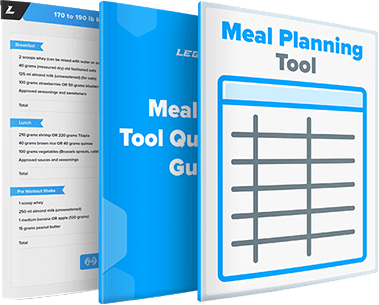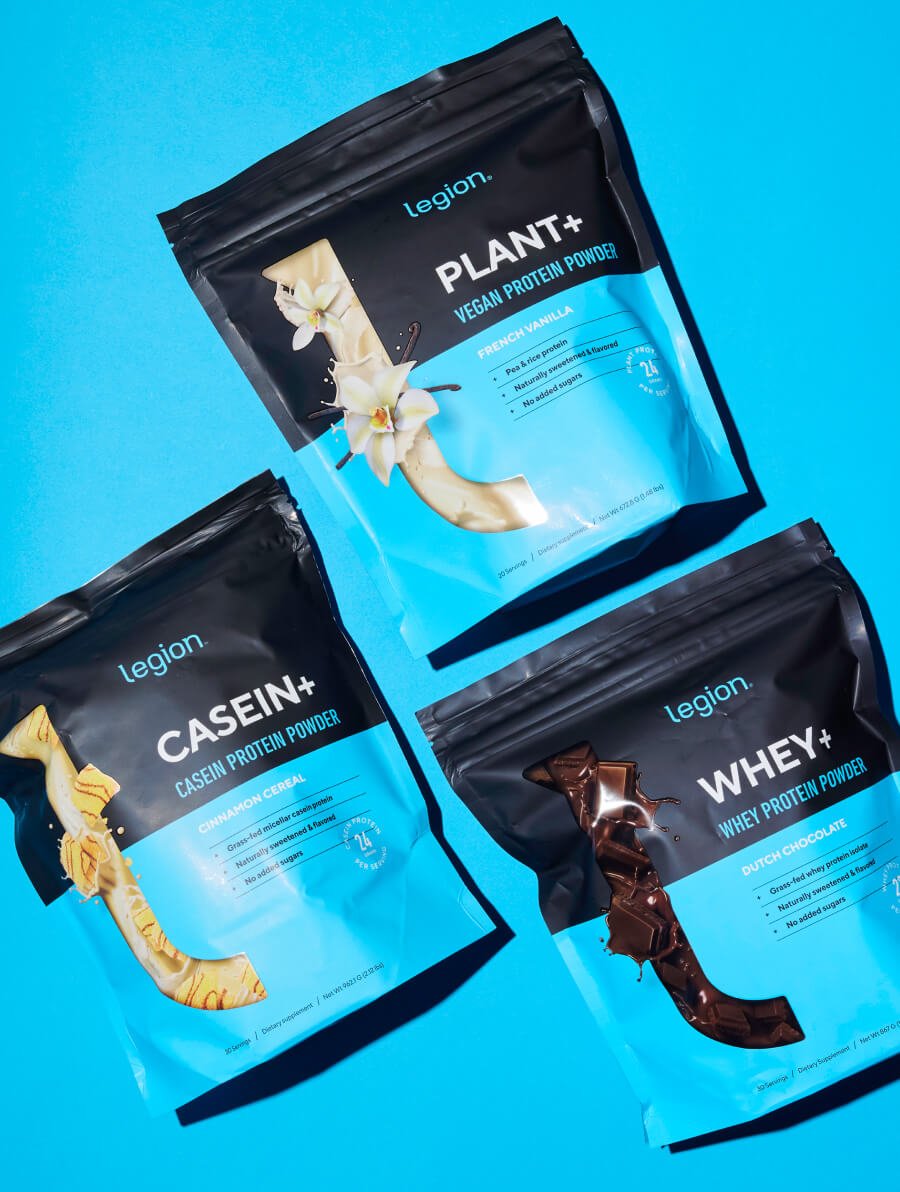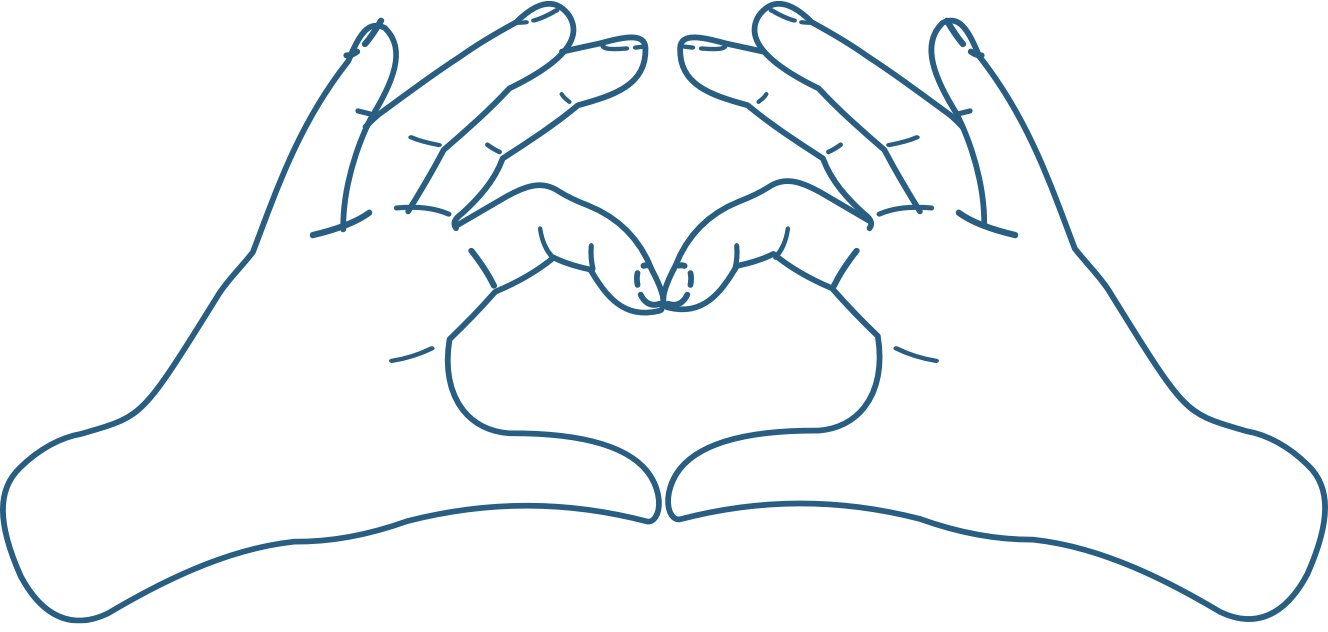“If It Fits Your Macros” (IIFYM) is a dietary strategy that revolves around eating a certain number of calories and amount of protein, fat, and carbs every day from whatever foods you want.
If used properly, IIFYM is the most reliable way to lose weight.
Counting macros for weight loss gives you tremendous flexibility in what you can eat while dieting. Pasta, bread, potatoes, chocolate, cake, and ice cream are all acceptable choices. In fact, whether or not you can eat a food just depends on if it fits your macros.
The IIFYM diet is very easy to set up and follow, too. All you need to do is calculate your macros for weight loss, count your macros every day, and adjust your macronutrient targets based on how your body responds.
When using the IIFYM diet to lose weight you also want to get at least 80% of your daily calories from whole, nutritious, minimally processed foods.
In this article, you’ll learn what IIFYM is, the pros and cons of counting macros vs. calories for weight loss, how to calculate your macros for weight loss, and more.
(Or if you’d prefer to skip all of the scientific mumbo jumbo, and you just want to know how many calories, how much of each macronutrient, and which foods you should eat to lose weight, no problem! Just take the Legion Diet Quiz, and in less than a minute, you’ll know exactly what diet is right for you. Click here to check it out.)
Want to listen to more stuff like this? Check out my podcast!
What Is the IIFYM Diet?
IIFYM is an initialism of if it fits your macros. The only rule on this diet is simple: you can eat whatever you want as long as it fits your macros (hence the name).
“Macro” is a contraction of macronutrient, which is a type of nutrient the body requires in large amounts. The primary macronutrients are protein, carbohydrate, and fat.
IIFYM, also known as macronutrient-based dieting, is predicated on a few simple principles:
- Your body weight is dictated solely by how much you eat, not what you eat. In this way, a calorie from brown rice is no different than a calorie from a brownie.
- If you want to improve your body composition (lose fat and/or build muscle), you need to eat the right amount of calories per day according to your goals and pay attention to where those calories come from in terms of protein, carbs, and fat.
- If you hit your macro targets (protein, carb, and fat targets) every day, you’ll see results regardless of the foods you eat.
In short, IIFYM is a more sophisticated version of the “calories in, calories out diet” that makes it more workable for people who want to improve their body composition and not just lose weight.
Although just counting calories will help you lose weight, it won’t necessarily help you lose fat. In other words, a calorie is a calorie if we’re only looking at body weight, but calories can be quite different when considering body composition.
That is, if all you want to do is lose weight, a calorie deficit of any kind will get the job done. If you want to lose fat and not muscle (or even gain muscle), though, you need to eat the right amount of protein, carbs, and fat.
Specifically . . .
- You need to eat a high-protein diet, which improves muscle gain and post-workout recovery and reduces hunger.
- You need to eat enough carbs, which improves workout performance, recovery, mood, and muscle growth.
- You need to eat a moderate amount of fat to maintain your health, stay satisfied, and give your meals flavor (but not so much that you can’t meet your protein and carb targets).
IIFYM ticks all of these boxes and is thus superior to merely calorie counting, especially for improving your physique and fitness.
How to Calculate Macros for Weight Loss
There are three steps to counting macros for weight loss: estimate your TDEE, set a daily calorie target, turn your calorie target into macronutrient targets.
Step 1: Estimate your TDEE.
To count macros for weight loss, you first need to calculate how many calories you’re burning every day, known as your total daily energy expenditure (TDEE).
To find this number, use the Legion TDEE Calculator.
If you don’t want to bother with the calculator and you’re okay with a less accurate number, you can also get a rough estimate of your TDEE by multiplying your bodyweight in pounds by 15.
Step 2: Set a daily calorie target.
To lose weight, you need to eat fewer calories than you burn every day (fewer calories than your TDEE).
I recommend you use a moderate calorie deficit of 20 to 25% (75 to 80% of your TDEE). This is large enough to burn significant amounts of fat without causing extreme hunger, irritability, or lethargy or interfering significantly with your workouts.
For example, my TDEE is about 3,000 calories, so when I want to lose weight, I set my calorie intake to about 2,300 calories per day (3,000 x 0.75).
Step 3: Turn your calorie target into macronutrient targets.
Lastly, you need to “budget” your calories into different amounts of protein, carbohydrate, and fat. When counting macros for weight loss, you want to . . .
- Eat 1 to 1.2 grams of protein per pound of body weight per day. If you’re very overweight (over 25% body fat for a man and over 30% body fat for a woman), then drop this to 40% of your total calories per day.
- Eat 15 to 30% of your total calories from fat. This generally works out to about 0.2 to 0.4 grams of fat per pound of body weight per day.
- Get the rest of your calories from carbs. This generally works out to about 30 to 60% of your total calories.
For example, here’s what my macros would look like for weight loss:
- I weigh about 190 pounds, so I’d want to eat about 230 grams of protein per day (190 x 1.2). One gram of protein contains 4 calories, so that means I need to budget 920 calories for protein (230 x 4).
- I like to get about 20% of my calories from fat while cutting, which equates to 460 calories (2,300 x 0.2). As each gram of fat contains 9 calories, I’d want to eat about 50 grams of fat per day (460 / 9).
- Finally, I need to add up how many calories I’ve allotted to protein and fat to see how many I have left over for carbs. I’ve earmarked 920 calories for protein and 460 calories for fat, which leaves 920 calories for carbs (2,300 – 1,380). As each gram of carbohydrate contains 4 calories, I’d want to eat 230 grams of carbs per day (920 / 4).
You may be surprised to see I don’t recommend low-carb dieting. That’s because low-carb diets aren’t enjoyable for most people, and research shows that so long as protein intake is high, they aren’t better for fat loss.
You can do all of these calculations in a spreadsheet, but that’s tedious and error prone. Instead, you can quickly and accurately calculate your macros for weight loss by using the Legion Macronutrient Calculator.
Does Counting Macros for Weight Loss Work?
Some people claim that something as simple as counting macros doesn’t work for weight loss. The body is far too complex. Hormones, food quality, and other factors matter, too, and so on and so forth.
The reality, though, is this:
You don’t gain weight by eating the “wrong” foods, and, by the same token, you don’t lose weight by eating “clean.” You gain weight by eating too much food, and you lose weight by eating less food than your body requires to maintain its current body weight.
The relationship between how much energy you’re eating versus burning is known as “energy balance.”
Energy balance is incredibly important because it alone determines whether your weight goes up, down, or stays the same.
If you eat fewer calories than you burn, you’re in a state of “negative energy balance,” also called a “calorie deficit,” and this results in weight loss. If you eat more calories than you burn, you’re in a state of “positive energy balance,” or a “calorie surplus,” and this results in . . . you got it . . . weight gain.
Thus, research shows that if you want to gain complete control over your body composition, you need to control your calorie intake.
Remember too that your macronutrient intake (how much protein, carbs, and fat you eat) has a significant impact on your body composition, especially when trying to lose weight.
Research shows that the biggest mistake most people make when dieting to lose weight is not eating enough protein to preserve and build muscle mass. Many people also overly restrict their carb intake, which hampers their workout performance (and thus makes it difficult to train hard enough to maintain or build muscle).
When most people only track their calories, then tend to undereat protein, which invariably causes muscle loss and often results in them developing a “skinny fat” look.
Counting macros for weight loss is the best way to avoid this. The bottom line is that counting macros not only works, it’s the single best way to maintain and gain muscle and optimize your health while trying to lose weight.
5 Tips for Making IIFYM Work
The IIFYM diet is the most effective and sustainable way to lose weight . . . when done properly.
Some people shoot themselves in the foot, though, by abusing the principles of IIFYM to eat as much junk food as they can while staying within their macros. While this is technically “allowed” on the diet, it’s not an optimal way to lose weight, maintain or gain muscle, or stay healthy.
Instead of using IIFYM to include a few guilt-free treats in an otherwise healthy diet, these people use it to eat like a spoiled child and end up dealing with hunger (junk food isn’t very satitating), ingraining poor eating habits, and developing nutrient deficiencies.
Here’s how to count macros for weight loss the right way:
Get at least 80% of your daily calories from healthy (minimally processed and nutritious) foods that you actually like.
One of the biggest problems people run into when dieting is they get to a point where they just can’t stomach chicken and steamed veggies anymore, and one taste of something savory leads to an all-out binge.
The best way to avoid this is to simply eat healthy foods that you like every day by working them into your meal plan as desired.
Who says you need to eat nothing but chicken? Have some steak, too! Love you some pasta? Swap out your rice and oatmeal a couple days per week! Want a delicious, high-protein afternoon snack? Skyr with fruit and nuts is my go-to.
If you want to learn more about how to eat a healthy diet, read this article:
How to Eat Healthy and Actually Enjoy It (Really!)
Create a meal plan you can stick to.
Many people who count macros for weight loss simply track their meals on the fly, without any preparation or forethought.
This leads to all kinds of wasted time and energy deliberating over what to eat next, and often a few headaches (and stomachaches) when you realize you’ve miscalculated and left yourself with too few calories to comfortably make it through the rest of the day.
I don’t know about you, but I prefer to spend as little time as possible thinking about what I’m going to eat every day. I also want consistent, rapid results, and thus, I’m a big proponent of creating a meal plan, following it every day, and modifying it as needed to keep my meals satisfying.
You can create a meal plan from scratch or, you can save yourself even more time and hassle by using the free Legion Meal Planning Tool. With just a few clicks, it automatically calculates your calories, macros, and even micros and turns them into a 100% custom meal plan.
Check it out here:
Make room for treats.
So long as the majority of your calories (~80%) come from nutritious foods, feel free to enjoy treats in moderation (the remaining 20%).
You can also budget these discretionary calories however you want throughout the week—eating a little treat every day or a big one once or twice per week.
For instance, I really like dark chocolate so I often eat 100 to 200 calories’ worth of it every day. Sometimes, though, I’ll “save up” my discretionary calories during the week and have a pint of ice cream on the weekend.
Pizza, cake, and other desserts can fit in your diet using the same system.
Make your meal timing work for you.
If the nutritious foods you like to eat most tend to be high in calories (usually due to a high fat content), an easy way to accommodate this is reducing your meal frequency.
This allows you to increase the size of your meals while still hitting your calorie and macro targets.
Contrary to longstanding myths, eating fewer or more meals isn’t going to meaningfully impact your fat loss or muscle gain.
Your metabolism doesn’t slow down if you eat three meals per day versus seven and you don’t have to eat protein every 2-to-3 hours to avoid muscle loss.
Thus, you should eat on a schedule that best suits your preferences and lifestyle. So long as you hit your daily macro numbers, doing it in four meals instead of eight, or vice versa, is totally fine.
That said, depending on when you eat your meals relative to your workouts, you may also want to eat a pre-workout and/or a post-workout meal.
Use supplements to help hit your macros.
You don’t need to take any supplements to make the IIFYM diet work for you. They’re completely unnecessary.
That said, there are a few supplements that can make hitting your macros and staying healthy easier (And if you’d like to know exactly what supplements to take to reach your fitness goals, take the Legion Supplement Finder Quiz.):
- Protein powder and bars. Getting all of your protein from whole foods can sometimes be impractical, which is why supplements can sometimes come in handy. If you want a clean, delicious source of protein, try Whey+. And if you want macro-friendly protein bars that taste like dessert, try Legion Protein Bars.
- Sport multivitamin. Although you can get all of the vitamins and minerals you need from eating a healthy diet, it’s still possible to become deficient in a few, less common nutrients (such as vitamin K2 and selenium). If you’re looking for a properly dosed multivitamin supplement that has everything you need and nothing you don’t, try Triumph.
- Fish oil. Unless you’re eating several servings of fatty, omega-3-rich fish each week, it can be difficult to eat sufficient amounts of omega-3 fatty acids. If you’re looking for a clean, highly-potent, all-natural fish oil supplement, try Triton.
- Phoenix fat burner. Counting macros will help you lose fat without any supplements, but some safe, natural substances can make the process faster and more enjoyable. If you want to enjoy faster fat burning and fewer hunger and cravings, try Phoenix.
Oh, and if you aren’t sure if IIFYM is right for your circumstances and goals, then take the Legion Diet Quiz! In less than a minute, you’ll know exactly what diet is right for you. Click here to check it out.
Scientific References +
- Helms, E. R., Zinn, C., Rowlands, D. S., & Brown, S. R. (2014). A systematic review of dietary protein during caloric restriction in resistance trained lean athletes: A case for higher intakes. In International Journal of Sport Nutrition and Exercise Metabolism (Vol. 24, Issue 2, pp. 127–138). Human Kinetics Publishers Inc. https://doi.org/10.1123/ijsnem.2013-0054
- Schoeller, D. A. (2009). The energy balance equation: Looking back and looking forward are two very different views. In Nutrition Reviews (Vol. 67, Issue 5, pp. 249–254). Nutr Rev. https://doi.org/10.1111/j.1753-4887.2009.00197.x
- Hand, G. A., Shook, R. P., Paluch, A. E., Baruth, M., Crowley, E. P., Jaggers, J. R., Prasad, V. K., Hurley, T. G., Hebert, J. R., O’Connor, D. P., Archer, E., Burgess, S., & Blair, S. N. (2013). The energy balance study: The design and baseline results for a longitudinal study of energy balance. Research Quarterly for Exercise and Sport, 84(3), 275–286. https://doi.org/10.1080/02701367.2013.816224
- Johnston, C. S., Tjonn, S. L., Swan, P. D., White, A., Hutchins, H., & Sears, B. (2006). Ketogenic low-carbohydrate diets have no metabolic advantage over nonketogenic low-carbohydrate diets. American Journal of Clinical Nutrition, 83(5), 1055–1061. https://doi.org/10.1093/ajcn/83.5.1055
- Helms, E. R., Aragon, A. A., & Fitschen, P. J. (2014). Evidence-based recommendations for natural bodybuilding contest preparation: Nutrition and supplementation. In Journal of the International Society of Sports Nutrition (Vol. 11, Issue 1, pp. 1–20). BioMed Central Ltd. https://doi.org/10.1186/1550-2783-11-20
- Burke, L. M., Cox, G. R., Cummings, N. K., & Desbrow, B. (2001). Guidelines for daily carbohydrate intake: Do athletes achieve them? In Sports Medicine (Vol. 31, Issue 4, pp. 267–299). Adis International Ltd. https://doi.org/10.2165/00007256-200131040-00003
- Kanter, M. (2018). High-Quality Carbohydrates and Physical Performance. Nutrition Today, 53(1), 35–39. https://doi.org/10.1097/NT.0000000000000238
- Burke, L. M., Cox, G. R., Cummings, N. K., & Desbrow, B. (2001). Guidelines for daily carbohydrate intake: Do athletes achieve them? In Sports Medicine (Vol. 31, Issue 4, pp. 267–299). Adis International Ltd. https://doi.org/10.2165/00007256-200131040-00003
- Burke, L. M., Hawley, J. A., Wong, S. H. S., & Jeukendrup, A. E. (2011). Carbohydrates for training and competition. Journal of Sports Sciences, 29(SUPPL. 1). https://doi.org/10.1080/02640414.2011.585473
- Helms, E. R., Aragon, A. A., & Fitschen, P. J. (2014). Evidence-based recommendations for natural bodybuilding contest preparation: Nutrition and supplementation. In Journal of the International Society of Sports Nutrition (Vol. 11, Issue 1). BioMed Central Ltd. https://doi.org/10.1186/1550-2783-11-20
- Jäger, R., Kerksick, C. M., Campbell, B. I., Cribb, P. J., Wells, S. D., Skwiat, T. M., Purpura, M., Ziegenfuss, T. N., Ferrando, A. A., Arent, S. M., Smith-Ryan, A. E., Stout, J. R., Arciero, P. J., Ormsbee, M. J., Taylor, L. W., Wilborn, C. D., Kalman, D. S., Kreider, R. B., Willoughby, D. S., … Antonio, J. (2017). International Society of Sports Nutrition Position Stand: Protein and exercise. In Journal of the International Society of Sports Nutrition (Vol. 14, Issue 1, p. 20). BioMed Central Ltd. https://doi.org/10.1186/s12970-017-0177-8
- Phillips, S. M., & van Loon, L. J. C. (2011). Dietary protein for athletes: From requirements to optimum adaptation. Journal of Sports Sciences, 29(SUPPL. 1). https://doi.org/10.1080/02640414.2011.619204










